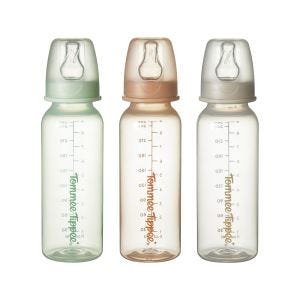
This is a demo store. No orders will be fulfilled.
Subscription orders can be cancelled at anytime. Standard delivery will be charged on each subscription order. Find out more about subscriptions.
They’re easy and fuss free
Your products are automatically sent to you
You save when you sign up for a subscription
You can cancel at any time
Most adults find getting a massage relaxing, and babies are no different! To help you learn how to massage your baby, let's run through some key points and top tips.
Baby massage has been practised by many cultures for thousands of years. But it was first commonly introduced to neonatal wards in Western countries around 30 years ago to support the development of premature babies.
It's a calming and reassuring process that involves rhythmic and gentle stroking of your baby's body, including key pressure points such as their fingers, wrists, and ankles. You can use your hands and an appropriate oil or lotion that's baby-safe.
Massage can be an enjoyable experience for both you and your little one. It's a great way to bond, and there are lots of other benefits that come with it. These include...
Touch is an important sense for bonding, and it can help to create a deep emotional connection between baby and parent. In the early days, massaging your baby can also help you to become more confident when handling and caring for them, and it gives you a chance to learn more about their body language and behaviour.
Touch during a relaxing massage releases oxytocin - the love hormone - for both you and your baby. So, when you massage them, you'll feel calmer and happier too! It also provides a lovely opportunity for you to have uninterrupted eye-to-eye contact and practice copying and turn-taking - which are key to help little ones learn conversation skills from an early age.
Some parents start massaging their baby when they need relief from trapped gas. A soothing body massage has lots of gastrointestinal benefits, including providing relief from wind, colic, constipation and teething discomfort.
Positive touch during massage can assist in lymphatic flow, which can help fight off infections and boost their immune system.
Having a scheduled massage after their bath and before bedtime creates a set schedule for a baby. This can help make them feel relaxed and secure, and aid in them settling into a sound sleep.
Baby massage can improve a little one's blood circulation and aid their physical development. It's also a good way to ease and prevent muscular cramps that can occur from time to time before they're able to crawl and walk independently.
Most little ones can enjoy the many benefits - both physical and mental - of nurturing touch from birth. Parents should start gently, though, and evolve their massage technique as their baby grows and develops.
From birth, you can practice softly stroking their legs, arms, back and chest with the pads of your fingers. You should avoid massaging their belly for the first few weeks so that you don't interfere with their umbilical stump if it's yet to fall off.
From around six weeks of age, your baby will be settled into a routine and will be able to enjoy a more structured massage at home.
The truth is there's no age limit to baby massages. You can continue giving them as long as you both want to.
Most parents give less frequent massages from their baby's first year when they're more active and able to wriggle around more freely. They typically stop altogether by the time their child is around five or six years old. When you choose to stop is up to you, and down to your routine and how comfortable your child is with massage.
Using baby oil or cream can help your hands to glide easier during your baby's massage and can make the experience even more relaxing. It's worth noting though that a baby's skin is especially delicate during the first month after birth. That's why it's recommended that oils and lotions are avoided altogether at first.
Once they're over one month old, you can use a baby-specific lotion or cold-pressed oil from a pharmacy, or use a pure, non-scented natural oil such as grapeseed. Baby-safe, petroleum-based ointments can also be used during a baby massage if your little one has dry skin or a condition like dermatitis and eczema.
Scented oils or lotions and those made from nuts, such as peanuts, should be avoided. Also, olive or mustard oils are not recommended for baby massage.
There's no one-size-fits-all guide when it comes to baby massage. There are lots of different techniques out there, but the following steps can help you get started...
To make sure your baby's massage stays a safe and enjoyable experience, be sure to follow these tips...
If your little one becomes upset or falls asleep during a massage, stop massaging them. If you're looking for support around baby massage, there are classes and workshops led by qualified instructors that can help guide you and build your confidence. Ask your GP, midwife, or health visitor about classes in your local area.